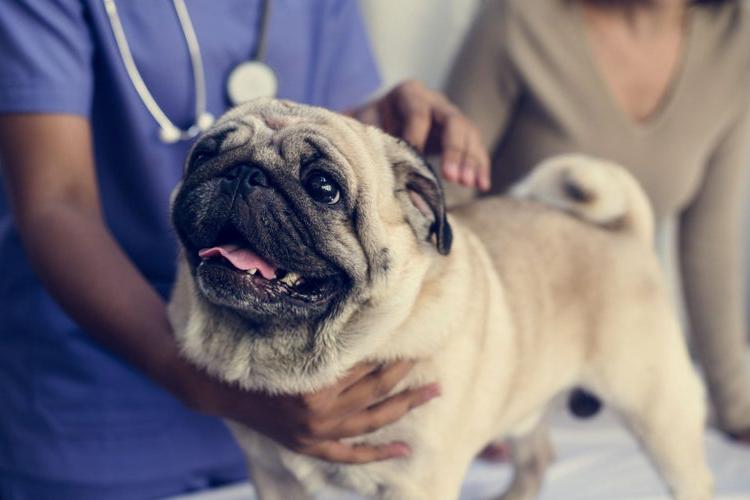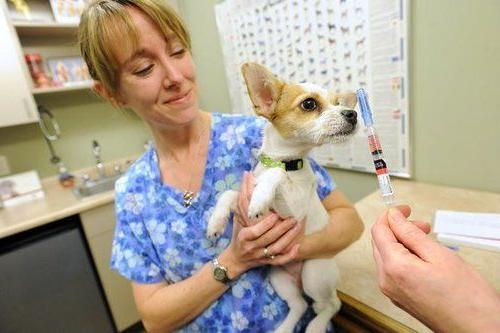Autoimmune Hemolytic Anemia (AIHA) in dogs is a condition where the immune system mistakenly attacks and destroys its own red blood cells. This can lead to severe anaemia, causing symptoms like lethargy, pale gums, and rapid breathing. Early diagnosis and treatment are crucial to managing this condition effectively.
AIHA can be a challenging condition to identify due to its varied symptoms, which often mimic other illnesses. Diagnosis typically involves blood tests and sometimes imaging to rule out other causes. Treatment options may include immunosuppressive drugs, blood transfusions, and supportive care.
“Prompt recognition and treatment of AIHA can significantly improve a dog’s quality of life.”
– Dr. Jane Smith, Veterinary Specialist
This article aims to inform you about the symptoms, diagnosis, and treatment options for AIHA, helping you make informed decisions for your furry friend.
Understanding Autoimmune Hemolytic Anemia in Dogs

What is Autoimmune Hemolytic Anemia?
Autoimmune Hemolytic Anemia (AIHA) is a condition where a dog’s immune system goes rogue, attacking its own red blood cells. This misguided attack leads to a drop in red blood cells, causing anaemia. It’s a bit like the immune system getting its wires crossed, mistaking these vital cells for invaders.
How the Immune System Affects Red Blood Cells
In a healthy dog, the immune system is the body’s defence force, always on the lookout for threats. But with AIHA, this system mistakenly targets red blood cells, breaking them down faster than the body can replace them. This results in a shortage of red blood cells, which are crucial for carrying oxygen throughout the body. The outcome? Your dog might seem more tired than usual, with pale gums and a faster heartbeat as the body struggles to get enough oxygen.
Causes and Risk Factors
Autoimmune Hemolytic Anemia (AIHA) in dogs can be triggered by a mix of environmental and genetic factors. Sometimes, it just happens without a clear reason, but other times, infections, certain medications, or even cancer can set it off. It’s like a puzzle with many pieces, and figuring out the cause can be tricky.
Breeds More Susceptible to the Condition
Some dog breeds are more prone to AIHA than others. Breeds like Cocker Spaniels, Poodles, and Old English Sheepdogs seem to have a higher risk. It’s not entirely clear why, but genetics likely play a big role. If you have one of these breeds, it’s good to be extra vigilant.
Environmental and Genetic Risk Factors
Environmental factors, such as exposure to certain chemicals or infections, can increase the risk of AIHA. On the genetic side, a family history of autoimmune diseases might make a dog more susceptible. Keeping an eye on your dog’s health and regular vet check-ups can help catch any issues early.
Symptoms of AIHA in Dogs

Common Signs and Symptoms to Watch For
Spotting AIHA early can make a big difference. Keep an eye out for signs like lethargy, pale gums, and rapid breathing. Your dog might also show a lack of appetite or seem unusually weak. These symptoms can sneak up on you, so it’s important to be observant.
How Symptoms May Vary in Severity
Not all dogs will show the same symptoms, and the severity can vary. Some might just seem a bit off, while others could be seriously unwell. It’s a bit like a spectrum, where symptoms can range from mild to severe. This variability can make it tricky to pinpoint the problem, so staying alert to any changes in your dog’s behaviour is key.
Importance of Early Detection
Early detection is crucial. The sooner you catch AIHA, the better the chances of managing it effectively. Regular vet check-ups and being aware of the symptoms can help catch the condition before it becomes severe. Remember, a quick response can significantly improve your dog’s quality of life.
Diagnosis of Autoimmune Hemolytic Anemia

Veterinary Diagnostic Procedures
Diagnosing AIHA in dogs involves a series of steps to ensure accuracy. Vets usually start with a thorough physical examination, looking for signs like pale gums or an increased heart rate. Blood tests are crucial, as they can reveal anaemia and the presence of antibodies attacking red blood cells. These tests help confirm if the immune system is indeed the culprit.
Tests Used to Confirm AIHA
To nail down the diagnosis, vets often use a Coombs test. This test checks for antibodies attached to red blood cells, a telltale sign of AIHA. Sometimes, additional tests like a complete blood count or a blood smear are needed to get a clearer picture. These tests help rule out other potential causes of anaemia.
Differential Diagnosis to Rule Out Other Conditions
AIHA symptoms can mimic other conditions, so it’s important to rule out other possibilities. Conditions like blood parasites, certain cancers, or even other autoimmune diseases can present similarly. By using a combination of tests and clinical signs, vets can differentiate AIHA from these other issues, ensuring the right treatment path is chosen.
Treatment Options for Autoimmune Hemolytic Anemia in Dogs

Overview of Treatment Strategies
Treating AIHA in dogs is all about managing the immune system’s overreaction. The main goal is to stop the immune system from attacking red blood cells. This often involves a combination of medications and supportive care to stabilise your dog’s condition.
Medications Commonly Prescribed
Vets typically prescribe immunosuppressive drugs to calm the immune system. Prednisone is a common choice, helping to reduce inflammation and slow down the immune attack. In some cases, other drugs like azathioprine or cyclosporine might be used, especially if the response to initial treatment is slow. These medications work together to give your dog’s body a chance to recover and produce new red blood cells.
Role of Blood Transfusions and Supportive Care
In severe cases, blood transfusions can be lifesaving. They provide an immediate boost of red blood cells, helping to stabilise your dog while other treatments take effect. Supportive care is also crucial, including maintaining hydration and monitoring for any complications. Regular check-ups and blood tests help track progress and adjust treatments as needed. This comprehensive approach ensures your dog gets the best chance at recovery.
Managing AIHA in Dogs
Long-term Management and Monitoring
Managing AIHA in dogs is a long-term commitment. Regular monitoring is key to ensuring your dog stays healthy. This means frequent vet visits to check blood levels and adjust medications as needed. It’s a bit like keeping a close eye on a delicate balance, making sure everything stays on track.
Lifestyle Adjustments for Affected Dogs
Living with AIHA means making some lifestyle changes for your dog. Gentle exercise is important, but avoid overexertion. A balanced diet can support overall health, so consider consulting your vet about the best food options. Stress can also impact your dog’s condition, so creating a calm environment is beneficial.
Importance of Regular Veterinary Check-ups
Regular vet check-ups are crucial for dogs with AIHA. These visits help catch any changes early, allowing for timely adjustments in treatment. Your vet can provide guidance on managing symptoms and ensuring your dog maintains a good quality of life. Think of these check-ups as a safety net, keeping your furry friend on the right path.
Prognosis and Lifespan

Factors Influencing the Prognosis of AIHA
The prognosis for dogs with AIHA can vary widely. Factors like the severity of the condition at diagnosis, the dog’s overall health, and how quickly treatment begins all play a role. Some dogs respond well to treatment, while others may face ongoing challenges. It’s a bit like a puzzle, where each piece can affect the overall picture.
Expected Lifespan with Treatment
With proper treatment, many dogs with AIHA can live a normal lifespan. The key is early detection and consistent management. Medications and regular vet visits help keep the condition under control, allowing your dog to enjoy a good quality of life. It’s all about staying on top of things and working closely with your vet.
Tips for Improving Quality of Life
- Ensure a balanced diet to support overall health.
- Provide gentle exercise to maintain fitness without overexertion.
- Create a stress-free environment to help manage symptoms.
- Keep up with regular vet check-ups to monitor progress and adjust treatments.
These steps can make a big difference, helping your dog live comfortably with AIHA.
Preventative Measures for AIHA in Dogs

Steps to Reduce the Risk of AIHA
Reducing the risk of AIHA involves a proactive approach. Regular vet check-ups are essential, as they can catch early signs before they escalate. Keeping your dog away from known triggers, like certain medications or chemicals, can also help. It’s about being vigilant and informed.
Importance of a Healthy Lifestyle and Diet
A healthy lifestyle plays a big role in prevention. A balanced diet supports the immune system, making it less likely to go haywire. Fresh, high-quality food with the right nutrients can make a difference. Regular, moderate exercise keeps your dog fit and healthy, reducing stress on the body.
Vaccination and Preventative Care Recommendations
Vaccinations are crucial in preventing infections that might trigger AIHA. Keeping up with your dog’s vaccination schedule is a simple yet effective step. Regular preventative care, like parasite control, also helps maintain overall health. It’s all about building a strong foundation for your dog’s wellbeing.
Final Thoughts

Autoimmune Hemolytic Anemia in dogs demands vigilant care and timely intervention. Understanding the symptoms and treatment options is crucial for effective management. While AIHA presents significant challenges, early detection and consistent veterinary care can greatly enhance a dog’s quality of life. By staying informed and proactive, pet owners can navigate this condition with confidence and compassion. Regular check-ups and a healthy lifestyle are key to ensuring a brighter future for affected dogs.
